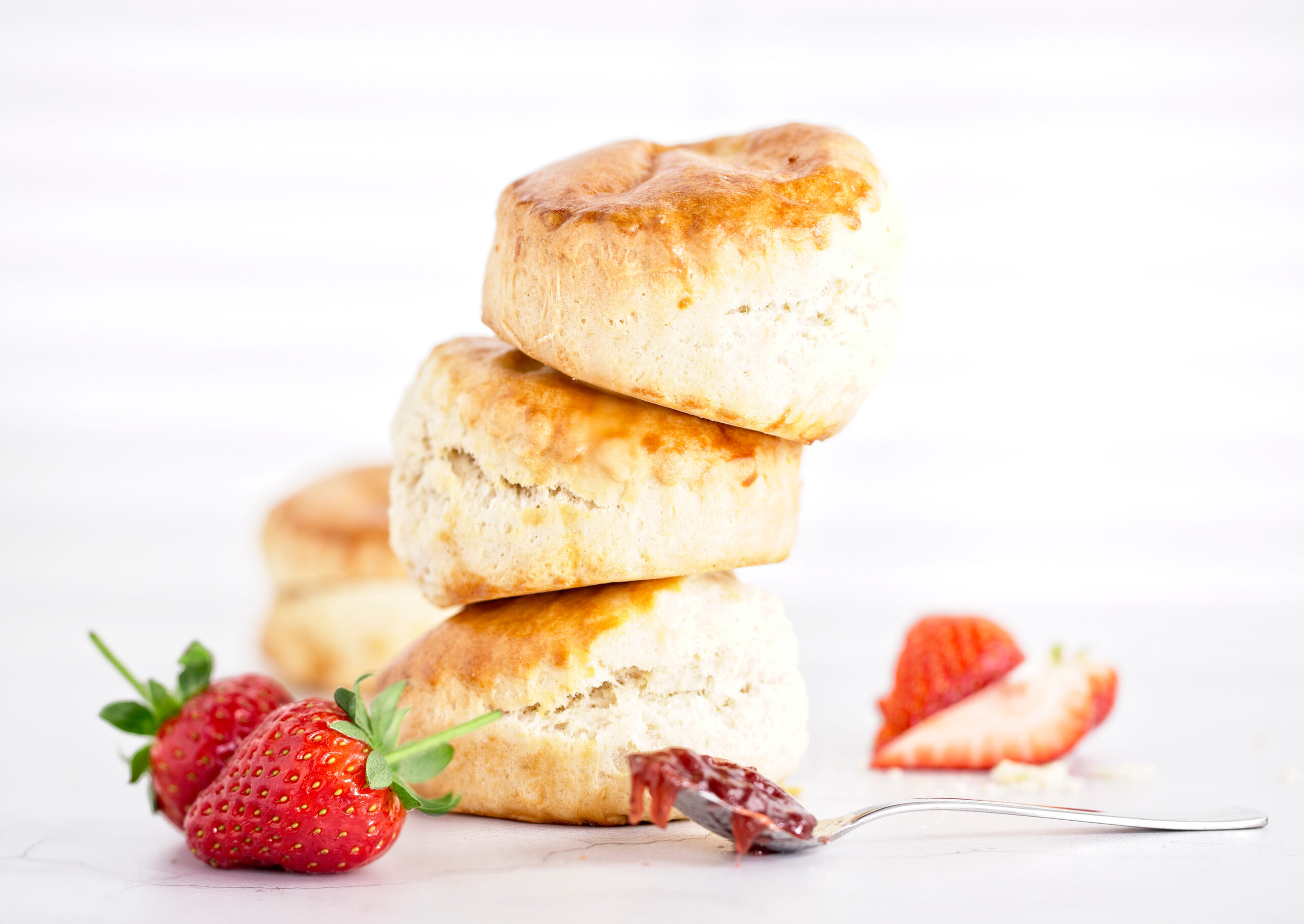
Traditional British Scones
Similar to an American Biscuit Shortcake but much less sweet...because you will add clotted cream and jam!
Equipment
- 1 Medium Bowl
- 1 Large Sieve or Sifter To sift the flour
- 1 Round Biscuit Cutter
- 1 Whisk
- 1 Pastry Brush
- 1 Set Measuring Cups
- 1 Set Measuring Spoons
- 1 Spoon
- 1 Small Knife To Cut the butter into pieces and level the flour
- 1 Sheet Pan
- Parchment Paper You can also grease your sheet pan instead of using parchment
Ingredients
- 2 Cups Unbleached All Purpose Flour Measure using a spoon and level off with a knife.
- 2 Tablespoons Granulated Sugar
- 4 Teaspoons Baking Powder Be careful to not used Baking Soda by mistake in this recipe
- 1/2 Teaspoon Salt
- 3 1/2 Tablespoons Butter, Cold Cut into small pieces, Salted or Unsalted. Either works fine as far as taste.
- 2/3 Cup Milk, Whole Add more if needed a Tablespoon at a time.
- 1 Medium Egg, Whisked For the Glaze
- 1 Tablespoon Milk For the Glaze
Instructions
- Preheat the oven to 425F (You will lower the temperature before baking)
- In a medium bowl whisk the 2 cups flour, the 2 Tbls sugar, the 4 Tbls baking powder and the 1/2 tsp salt. OR You can also add all the ingredients to a large sieve over the bowl and lightly tap the sides of the sieve and the ingredients will mix nicely right into the bowl and add air and therefore lift to your scones.
- Add the 5 Tbls butter and use your fingers to rub the butter into the flour mixture until it looks like sand
- Add the 2/3rd cups milk. Mix lightly with your hands until the mixture starts to come together without lumps. The dough should be a little sticky. You can add more milk a Tablespoon at a time if your flour mixture is not coming together. Different flours and humidity can cause differences in liquid needs.
- Place the dough on a well floured surface. Press, fold, and turn the dough gently 2-3 times. Press the dough into a round that is 1/2 inch to 3/4inch thick.
- Place your round biscuit cutter into flour and cut out 4 circles. Take the remaining dough scraps and work with it gently to form another dough disk and cutout the final scone. Twisting the cutter (and therefore sealing the edges) can keep the scone from rising properly.
- Whisk the 1 egg and the 1 Tablespoon of milk together to form the glaze. With the pastry brush, brush the uncooked scones with the glaze. This will create a nice golden brown top on your finished scone.
- Line the baking sheet with parchment paper or grease the baking sheet and place the scones on the baking sheet
- Reduce oven temperature to 400 degrees F.
- Bake the scones for 15-17 minutes or until golden brown
- Top with room temperature clotted cream and strawberry jam or lemon curd and enjoy!
Notes
Note: This yield on this recipe is based upon a 2" round cutter pressed to about 1/2" thick. The recipe can be doubled easily for a higher yield.
Note: The scone will raise up to double in thickness if you follow the recipe. But here are some tips: Make sure your oven is the correct temperature. Make sure you do not twist the cutter and therefore seal the edge when cutting out the shape. And double check to see if your baking powder is still in date. Getting scones to rise properly is probably the trickiest part of making scones. Having said that...it's pretty darned easy.
Note: Some British recipes call for the addition of eggs, vanilla and lemon juice or buttermilk instead of milk. It seems that there is a divided camp. The differences will stem from having or not having ingredients available, economics, country or county differences or because your grandmother "Nan" makes it one way and my grandmother "Nan" makes it another way. Try it both ways! That is the fun of cooking.